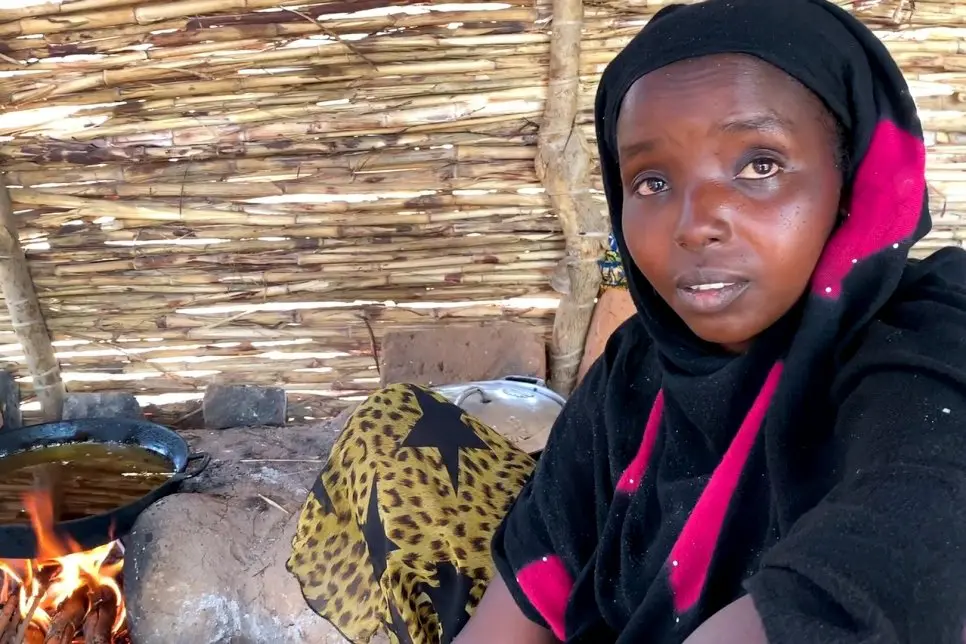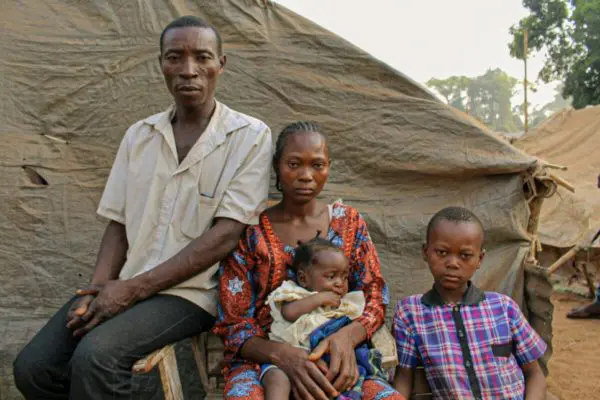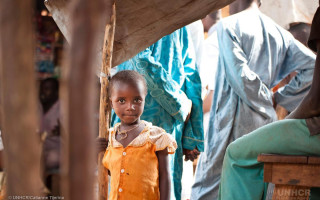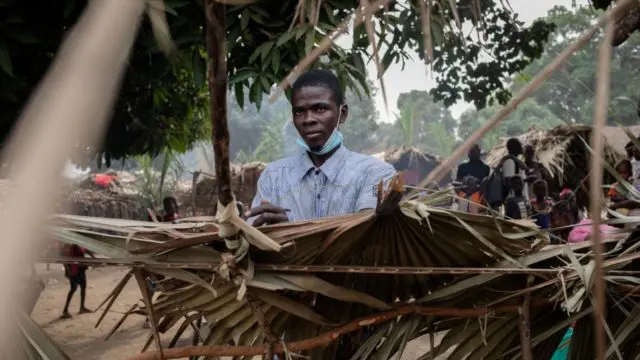
Zara, 30, arrived with her four children at the Doholo refugee camp. They fled violence in Central African Republic. © UNHCR/Simplice Kpandji
Chad has offered sanctuary to refugees from Central African Republic, where renewed violence continues to force tens of thousands to flee.
By Simplice Kpandji in Doholo Refugee Camp, Chad
As fighting between government forces and rebel groups approached their home in Central African Republic (CAR), Zara and her husband made a quick decision. She would take the four children to the town of Markounda, a day’s walk away near the border of Chad, and he would meet them.
Once there, however, Zara, 30, had no time to wait. As armed men drew closer, she took the children across the border into Chad. There, in Doholo refugee camp in the town of Choda, she and her children set up a shelter made from branches and straw – and Zara got straight to work, selling crepes and doughnuts.
“I had some savings which I took with me, and I was already selling crepes back in my country,” Zara said. “I needed to do something to cover the needs of my children, to feed them, put clothes on them. I need to give them a better future, even if we are in exile.”
Fighting first erupted in CAR in 2013, after rebels ousted President Francois Bozize. Since then, the country has experienced sporadic but devastating violence that has forced close to 1.5 million (or nearly one in three Central Africans) to flee. The latest violence came after last December’s presidential and parliamentary elections and displaced 250,000, many within their own country. Others, like Zara, have sought refuge in neighbouring countries such as Chad, Cameroon, the Democratic Republic of the Congo and elsewhere.
Despite COVID-19, Chadian authorities have kept the country’s border open and allowed access to asylum to some 8,500 refugees who fled since the beginning of this year.
After two weeks of quarantine in a centre built for the recent influx of refugees, 5,000 refugees were settled in Doholo, a nearby refugee camp already hosting 6,000 Central Africans who fled earlier violence in 2014.
UNHCR, the UN Refugee Agency is working with the government and partners to relocate thousands of refugees to safer, better equipped sites further from the border. UNHCR also provides refugees with core relief items, such as mats, mosquito nets and kitchen utensils, and helps refugee children enroll in schools.
“I need to give them a better future, even if we are in exile.”
Zara, whose eldest daughter helps her after school, earns nearly US$ 1.5 daily, a small sum she supplements by selling sugar, spices and peanuts. It is barely enough for her family to get by, having fled with almost nothing. She would like mats for the family to sit on, as well as larger buckets so they could store enough water to not have to constantly fetch more. She also needs blankets as well shoes and school supplies for the children.
As the conflict drags on, Zara knows she will not be able to return home any time soon.
But until peace comes, she hopes at least to reunite with her husband, “so our family can be whole again.”
Originally published by UNHCR on 7 April 2021.





